BBC Springwatch at Wild Ken Hill: Behind the scenes
- Published
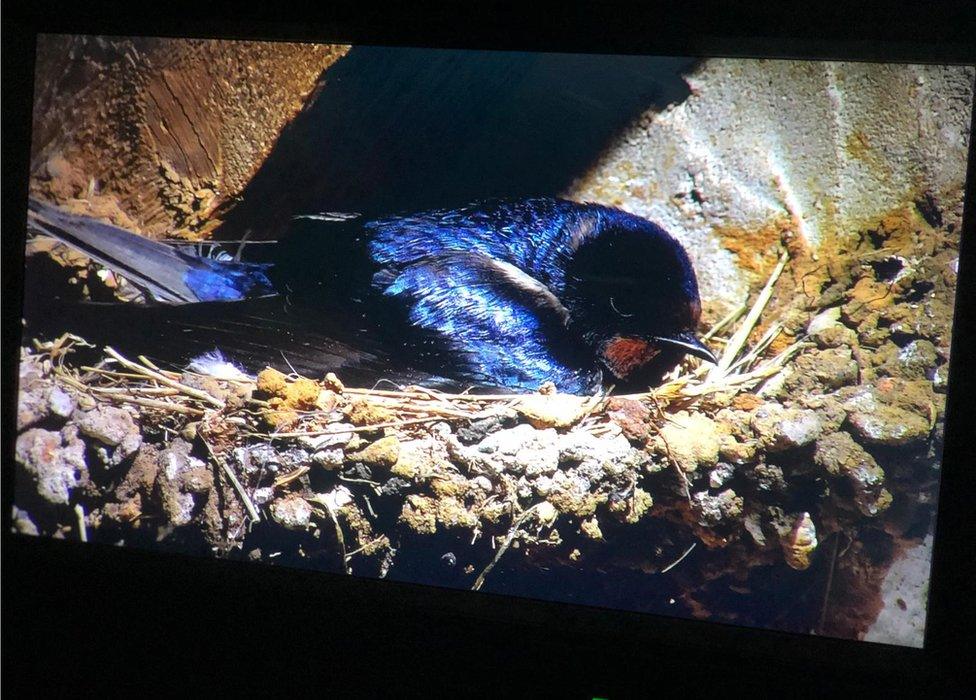
Springwatch producers say it has been a "strange spring" with many birds still sitting on eggs
The latest series of BBC Springwatch has set up base at a sustainable farming project in Norfolk. What happens behind the scenes and what wildlife can be seen there?
Each day, come rain or shine, Natalie Rance sets her alarm for 03:00 BST.
The 27-year-old is part of the BBC Springwatch team that will broadcast from Wild Ken Hill for the next three weeks.
Miss Rance is tasked with looking out for "any interesting activity" among the wildlife and takes clips to be used for the programme.
She describes the job she started on Saturday as a "dream come come true".
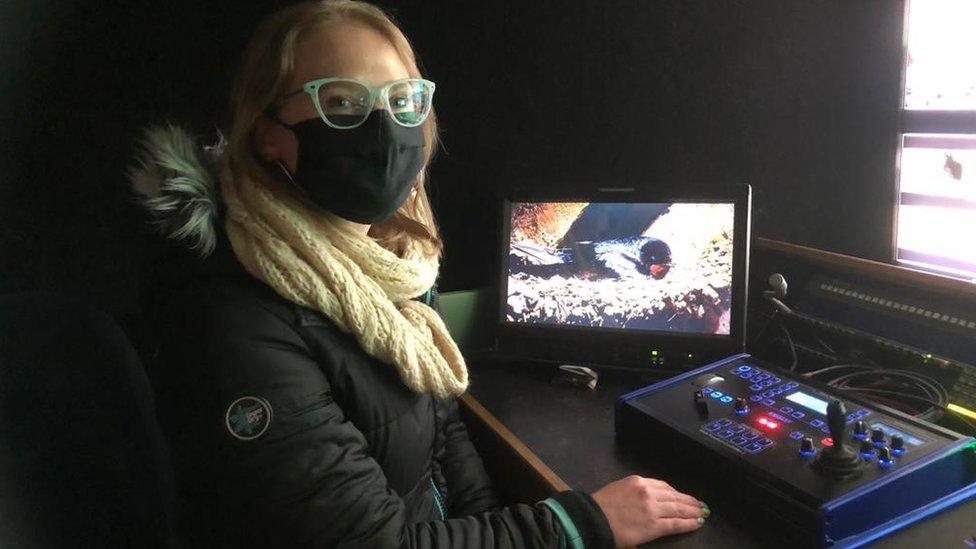
Story developer Natalie Rance, 27, says it is nice to get a view of the wildlife that would not ordinarily be seen
"My day starts at 3am as my shift here starts at 4am. I come in, have a look at the cameras and what's going on and you watch the animals go about their daily business as the day goes on," says the story developer.
"We've got a kestrel that's got two more chicks waiting to hatch and we're watching those that have already had chicks feed them, also watching any nesting behaviour or couples switching over."
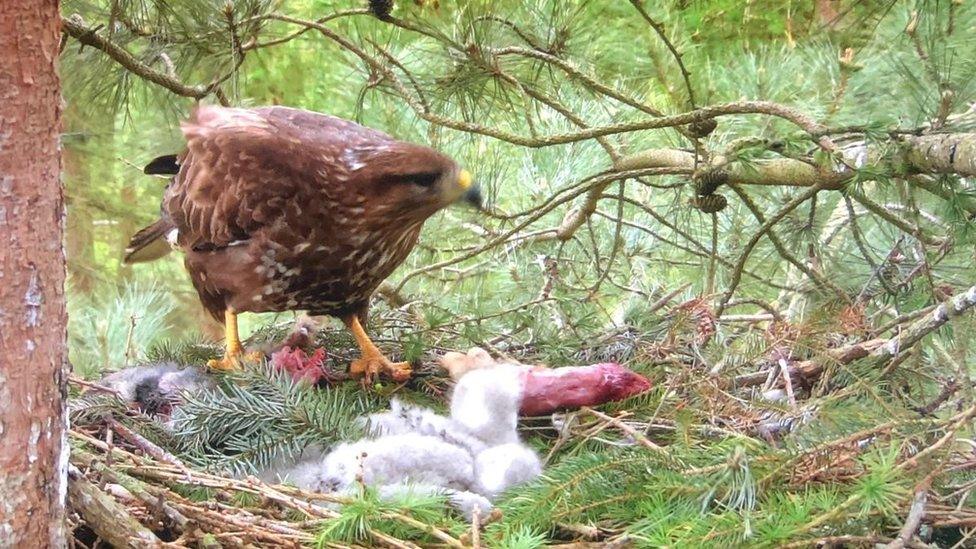
Buzzard chicks hatched at Wild Ken Hill two and a half weeks ago
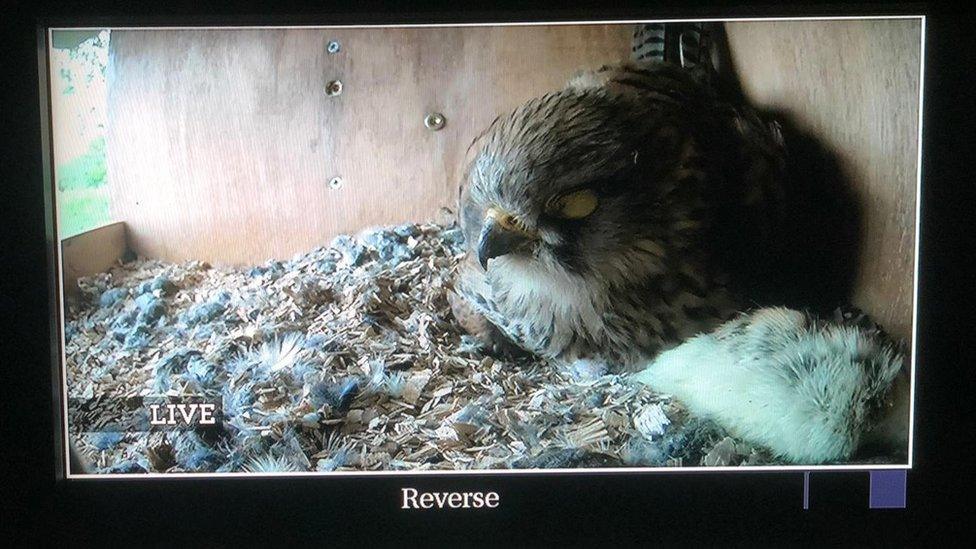
While a kestrel sits on her eggs waiting for them to hatch
A grey partridge can be seen waiting for more chicks to hatch, while tucked away in its nest built out of tightly woven grass is a chiffchaff.
As viewers would have seen on Tuesday, buzzard chicks hatched two-and-a-half weeks ago.
All of the activity is being captured by 19 cameras - expected to increase to 32 - across the 4,000-acre (1,619-hectare) site that stretches inland from the coast.
It is then monitored on screens housed within a large barn, usually used as a workshop but currently the base for the show's cast and crew.
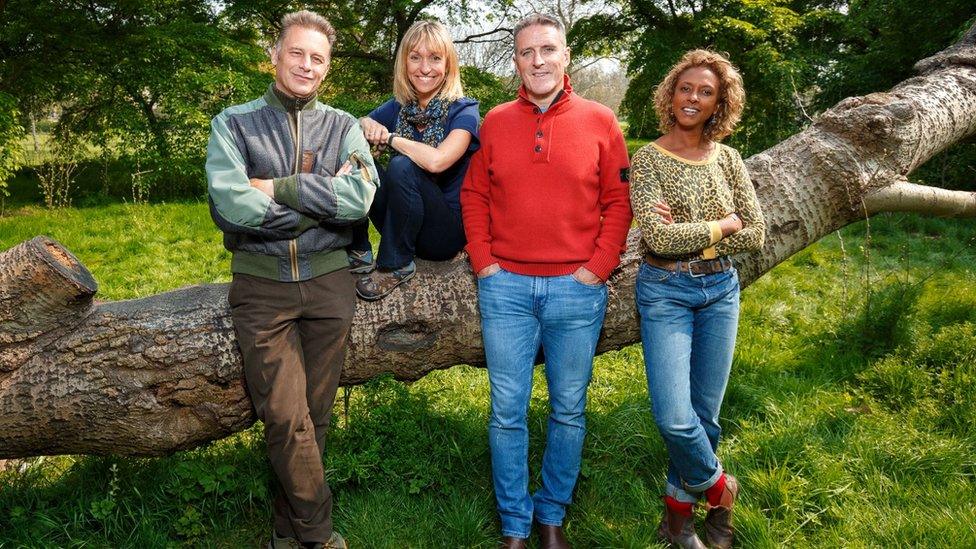
Chris Packham and Michaela Strachan, with fellow presenters Lolo Williams and Gillian Burke, host the show
"The buzzards are lovely to watch," says Miss Rance, as she monitors the screens.
"We're already watching them develop quite a lot, their pin feathers have been changing even in the last couple of days.
"As they get older, they'll probably get a bit more confident as well and potentially by the end of the show might be walking out on branches but we probably won't see them fledge because they do take quite a while, it's up to six weeks before they'll fledge the nest."
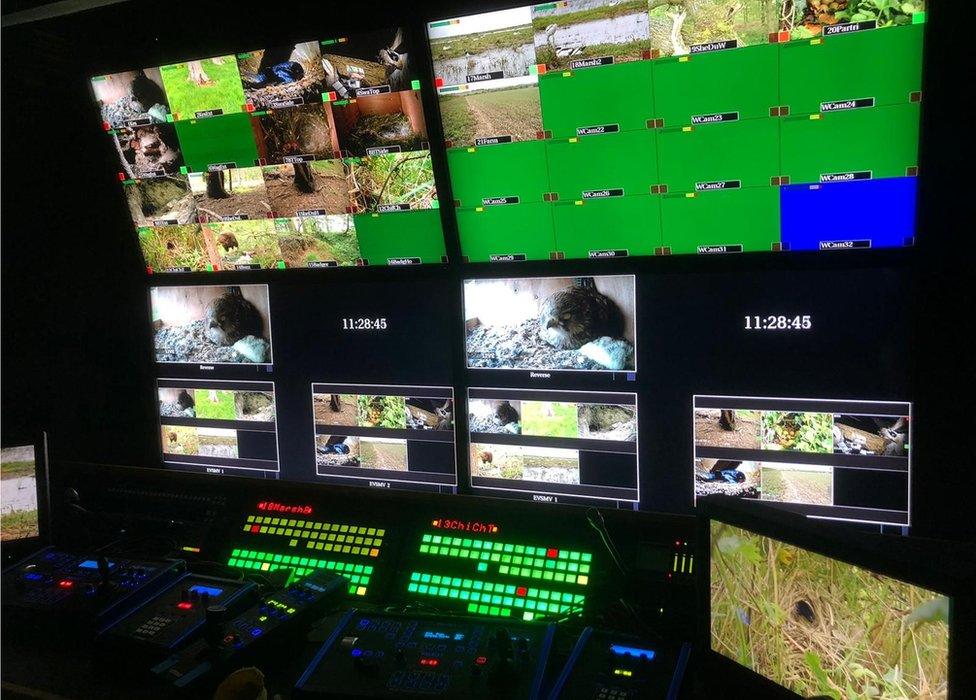
There are monitors showing the 19 cameras set up in the barn
Miss Rance, who has a degree in zoology and a masters in wildlife filmmaking, says it is "relaxing watching the animal behaviour and being able to learn about them, seeing them go about their day-to-day business and seeing them in a way you typically wouldn't be able to".
"The buzzard nest, for example, is right up high and it's something you would not get to see, so it's nice getting that view into their daily lives," she says.
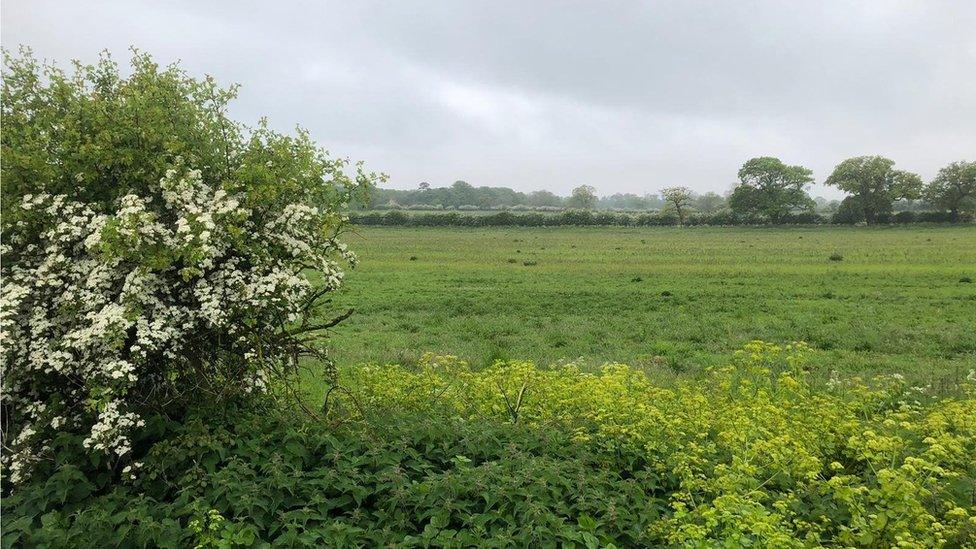
Wild Ken Hill is a 4,000-acre site in west Norfolk
The Wild Ken Hill Estate sprawls from south of Heacham to the north end of Snettisham and goes as far as Sedgeford.
It has been in the family's ownership since 1864 and has undergone a rewilding project since 2019 that has seen the reintroduction of native species, including beavers.
The estate also started a traditional conservation programme two years ago and uses regenerative farming.
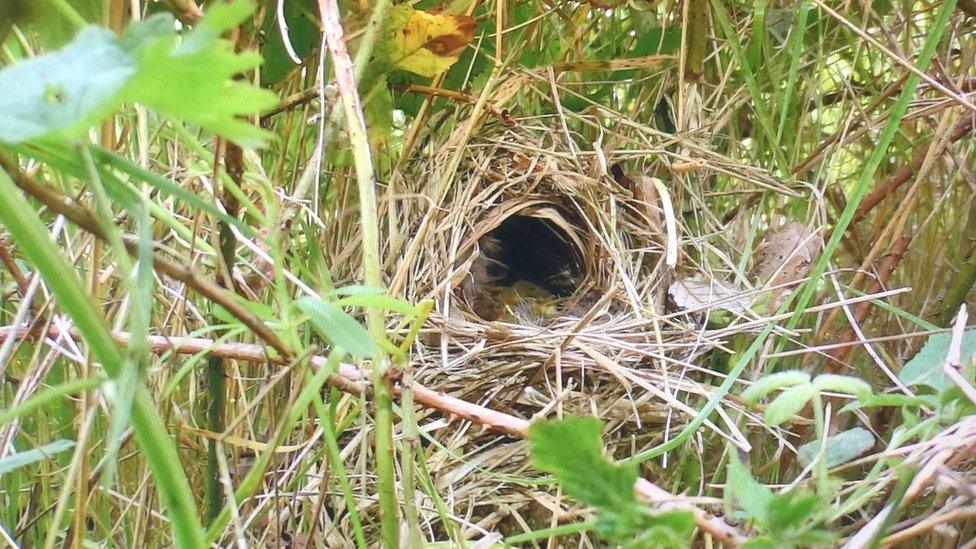
A chiffchaff nest can be spotted just above land level and built out of tightly woven grass
Springwatch's stint there isn't the first time the much-loved BBC nature programme has set up base in Norfolk.
It broadcast from Pensthorpe, near Fakenham, from 2008 to 2010.
Nigel Bean, part of the wildlife filming team, says "it's great to be back" in the county.
He says the "richness" and "sheer abundance" of wildlife at Wild Ken Hill appealed to the production team.
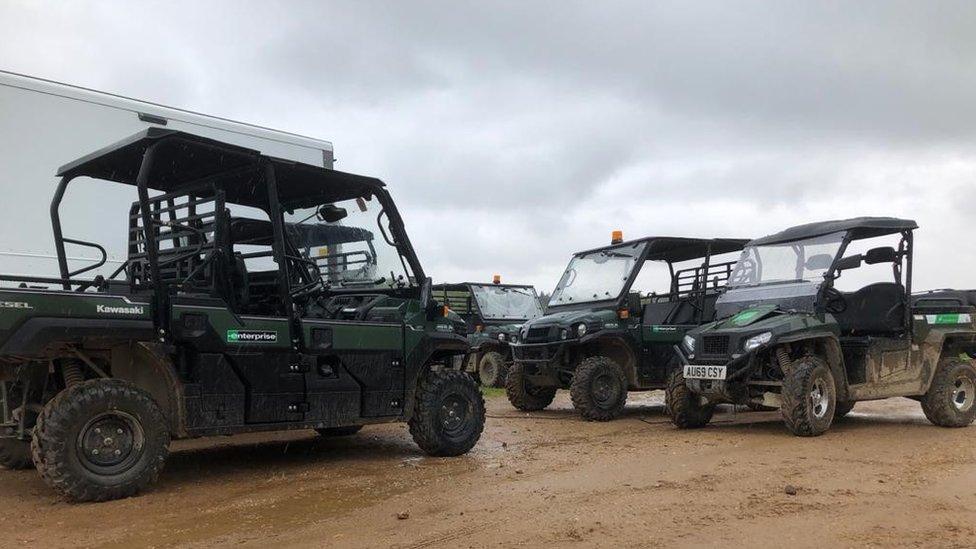
Crew members use buggies to get around the sprawling estate
"On our first walk around we saw a goshawk in the middle of the day, there were marsh harriers flying about, we were seeing a grey partridge, something I hadn't seen in years, and it was lovely to hear lots of skylarks.
"It's nice to see birds that are struggling elsewhere in the country doing so well here," says the University of East Anglia graduate.
Mr Bean says although the site is very different to their pre-Covid location in the Cairngorms, in the Scottish Highlands, Norfolk offers something "special".
"We're seeing wildlife that should be everywhere but it's really struggling in other places but here it's thriving and I think it's going to get better and better," he says.
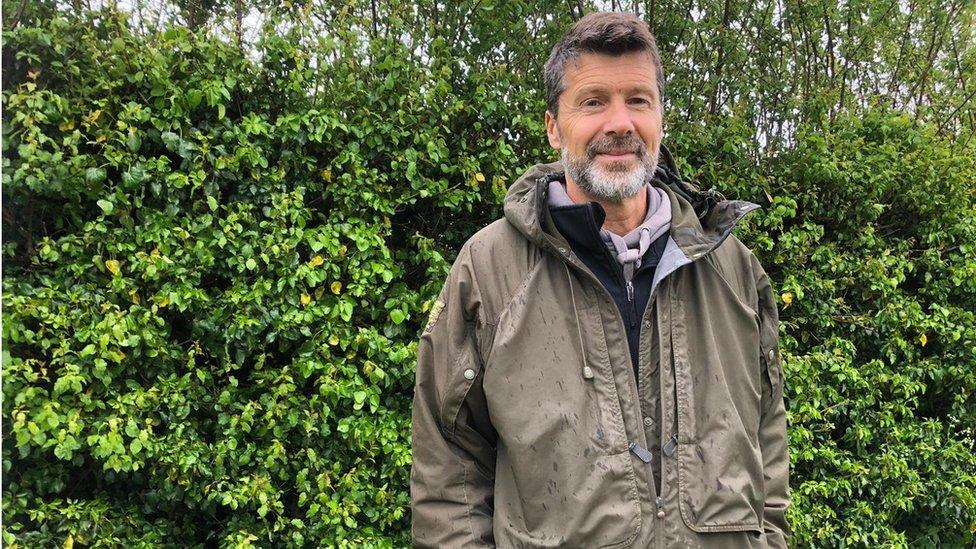
Nigel Bean, part of the wildlife filming team, says it is "great" to be back in Norfolk
For him, one of the highlights so far has been a grey partridge nesting on the estate.
Lead story developer Henry Tamblin agrees, saying it is "quite rare" nowadays to see what is the UK's native species of partridge.
And while some of the birds have been lucky to see their young successfully hatch, others have not been so fortunate.
Mr Tamblin, who is on his eighth Springwatch, says it has been a "strange spring" and "everything has muddled through this cold weather".
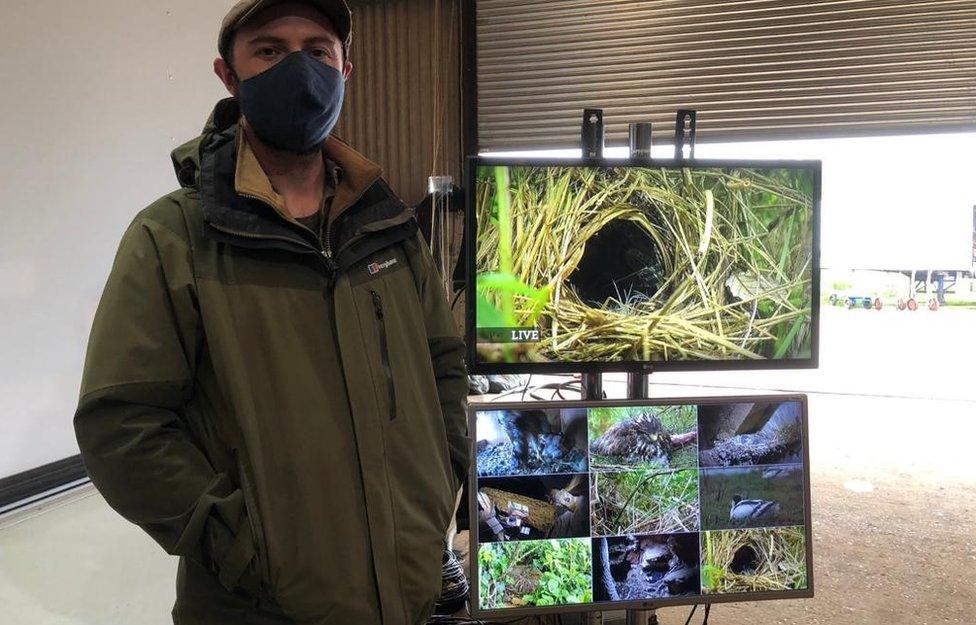
Lead story developer Henry Tamblin, pictured near one of the live feeds, is on his eighth Springwatch

An outside broadcast scanner unit, which houses the 19 camera units on wildlife watch, has been set up
The Springwatch cameras roll 24 hours a day but are monitored 20 hours a day.
Members of the crew get around the sprawling site, that stretches five miles (8km) across, in a fleet of buggies and there are nine miles (14.5km) of cables being used by the technical team across the site.
Estate manager Nick Padwick says having the Springwatch team on location has created a "great buzz around the place".
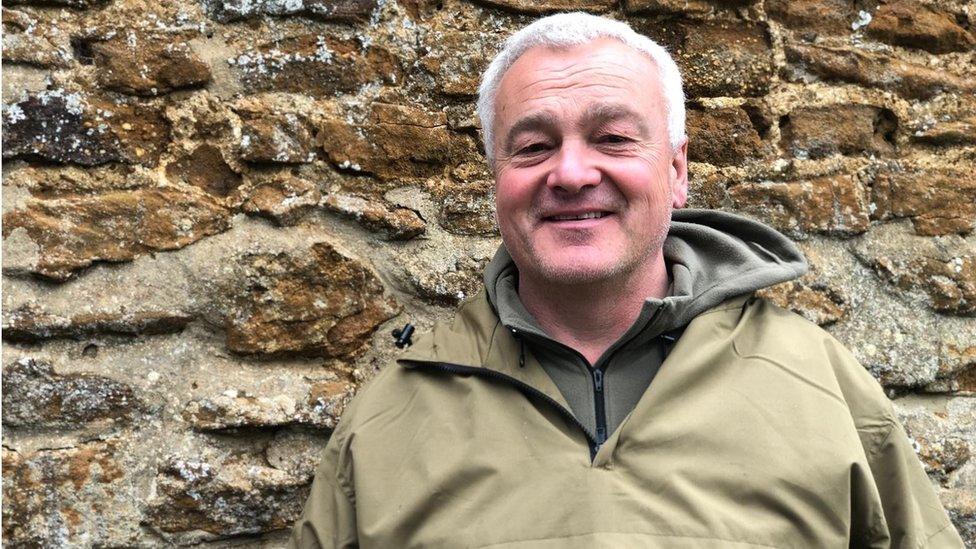
Estate manager Nick Padwick says the Springwatch team has created a "buzz around the place"
He says they were "absolutely thrilled" to be selected.
"I don't think there are many estates that can offer coast, freshwater marsh, conservation, rewilding and still focussing quite hard on food production," he says.

The Springwatch team has set up camp in a large barn, usually used as a workshop
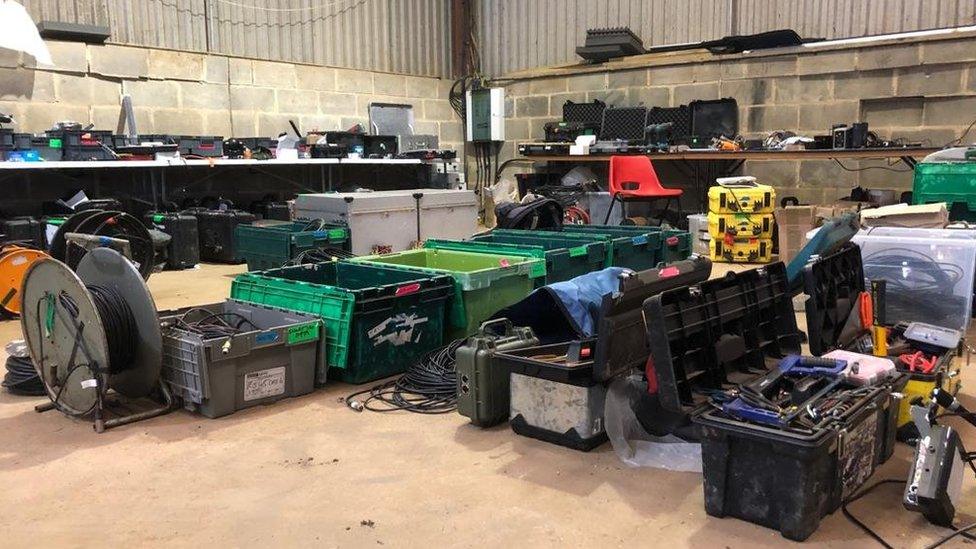
Space within the barn is being used for various items of equipment by the crew
Mr Padwick, who is from a farming background, says he hopes being on Springwatch can enable them to demonstrate "all three of our aspects of what we are trying to achieve: the traditional conservation, the rewilding and the regen farming piece".
"We are very privileged to be picked out amongst lots of other amazing conservation and farming work that's going on around the whole of the UK.
"Everyone seems to be incredibly positive, they're a lovely bunch of guys to work with and we want this to be a very pleasurable experience for them to help us showcase what we're doing here at Wild Ken Hill," he adds.
Springwatch is broadcast on BBC2 Tuesday to Friday at 20:00 BST or can be viewed on BBC iPlayer.

Find BBC News: East of England on Facebook, external, Instagram, external and Twitter, external. If you have a story suggestion email eastofenglandnews@bbc.co.uk, external
Related topics
- Published17 May 2021
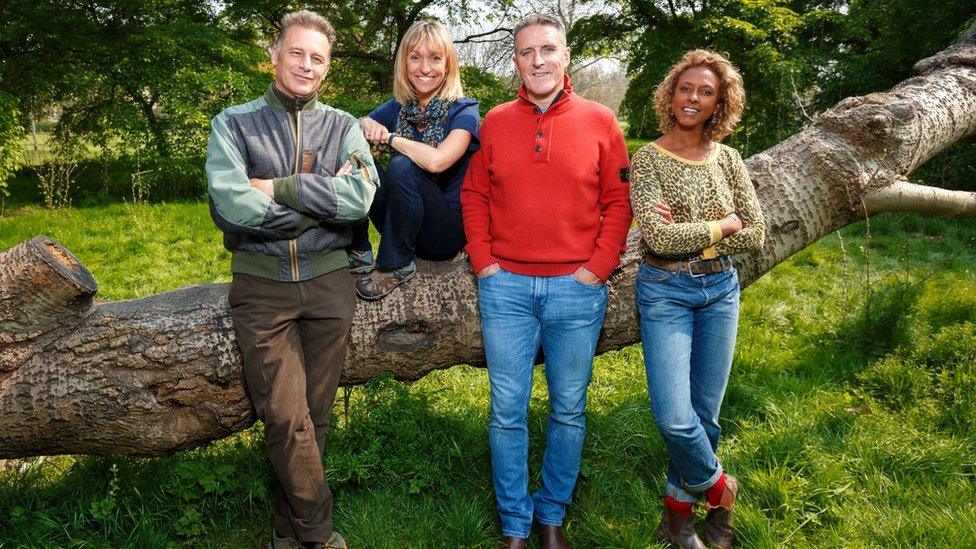
- Published10 May 2021
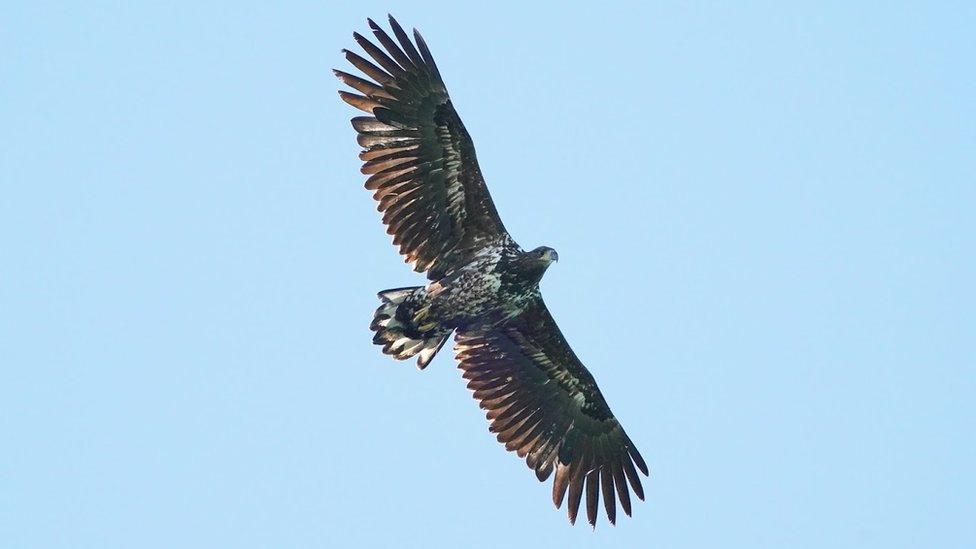
- Published4 May 2021
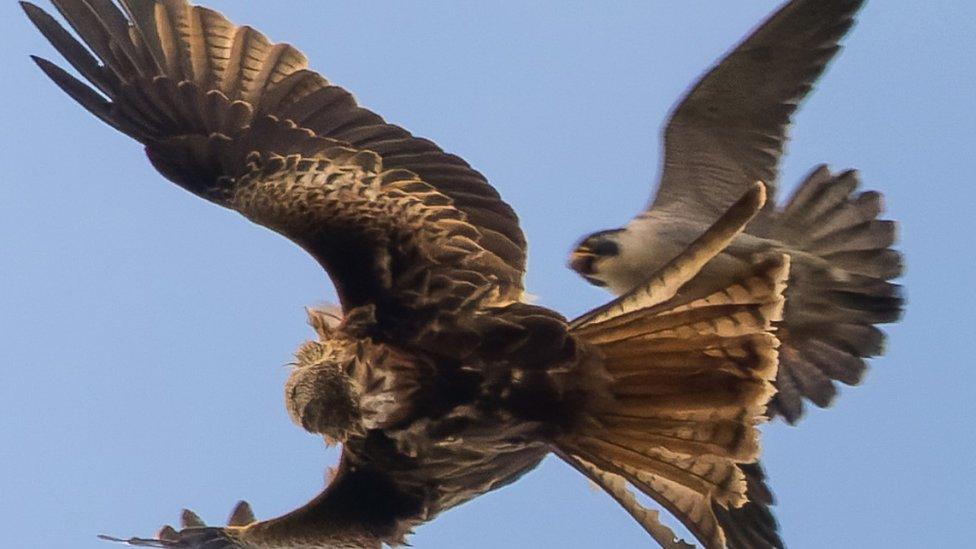
- Published20 April 2021
